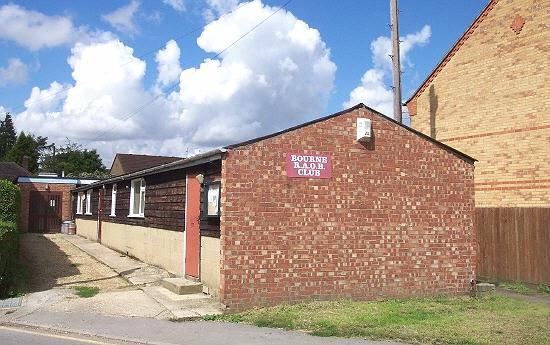|
The Bourne basket
works

The former basket works now refurbished and used as
the Bourne RAOB lodge clubhouse
A small but thriving industry that
existed in Bourne during the middle years of the 20th century was basket
making.
Children and women were employed cutting willow branches, or osiers, to
provide the raw materials and during the Second World War of 1939-45,
evacuees sent to the town to escape the bombing in Hull were also
recruited to help.
The basket works was at No 22 Burghley Street in the wooden hut that is
now the clubroom of the Royal Antediluvian Order of Buffaloes, or Buffs as
they are popularly known. The business was established around 1910 by
George Stafford and produced hand-woven baskets of all shapes and sizes,
for shopping, picnics, potato picking and a variety of other uses. The raw
materials came from a plantation of osier beds along Meadow Drove, towards
Dyke village, and were cut seasonally by occasional labour, usual women
and small boys anxious to earn a few pennies.
The flexible branches were peeled and dried and delivered to the works
where they were stacked ready for use, either in their raw state for
general products or boiled to give them a greater strength and more
attractive appearance for quality items. They were then woven into baskets
of all shapes and sizes and anyone who was interested in the craft was
invited to attend lessons once a week from the men and women who were
employed to cut and fashion the willow.
In later years, the bulk of the firmís trade was to provide baskets for
cycles built and sold by Currys Ltd, then the countryís biggest
manufacturers and suppliers at a time when bicycling was enjoying a
tremendous popularity. Hundreds of baskets left the works each week and
were sent by freight train from Bourne railway station to the companyís
works in the Midlands where they were fitted to cycles before being sold
at their various retail outlets, including one in Bourne which then
existed in the Market Place, shop premises now occupied by Connells, the
estate agents, although their logo could still be found in mosaic on the
floor of the entrance doorway until it was covered up with rubber matting
by the present tenants.
But changing fashions put paid to this cottage industry. Wire began to
replace willow and cycle manufacturers preferred its durability and so the
wholesale orders that had kept Staffordís works in production slowly
petered out and the business was forced to close around 1950. The building
stood empty until 1956 when it was taken over by the Buffs whose members
continue in occupation today.
|

PHOTO: Courtesy Graham Luesby |
|
Employees at the basket works during the
early 1940s, Marie and Dennis Martin, Harry Clarke and Edie
Bannister (seated). |
See also The RAOB
Lodge

Go to:
Main Index Villages
Index
|